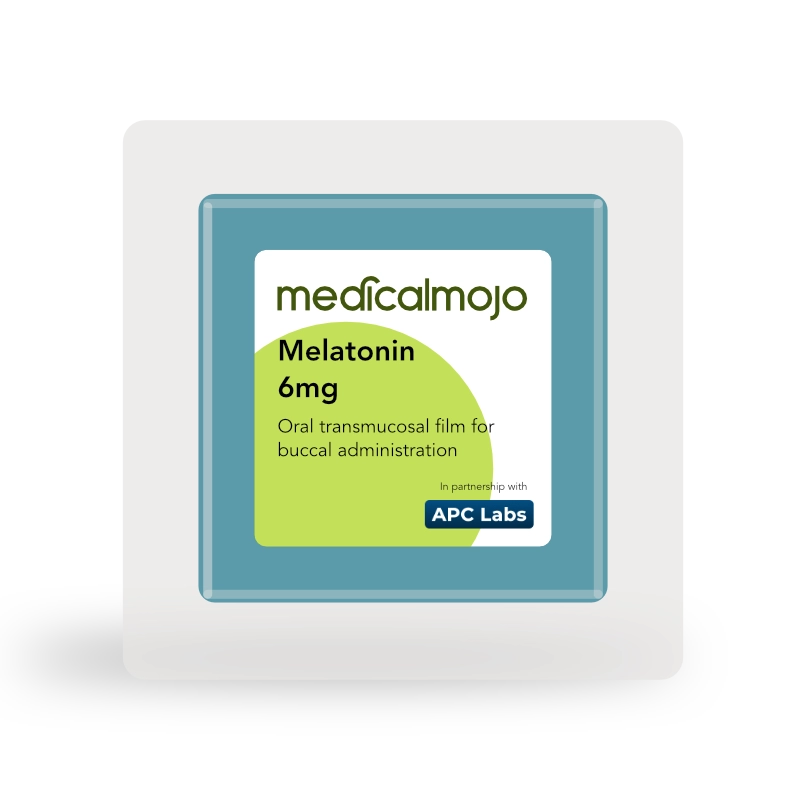Zopiclone is a drug that is often prescribed for the short-term treatment of insomnia. In this article, we will focus on the following points:
Table of contents
- How Zopiclone works
- How long does Zopiclone stay in the body?
- What is the recommended dose of Zopiclone?
- How Zopiclone affects sleep?
- How long does it take to work?
- What are the side effects of taking zopiclone?
- What are the withdrawal symptoms associated with zopiclone?
- Is zopiclone addictive?
- Can I buy zopiclone in the UK?
How Zopiclone works
Zopiclone belongs to the class of drugs known as the “Z-drugs”. Other drugs in this family include zolpidem and zaleplon. It was first introduced in the 1980s as a treatment for insomnia. At that time the search was on for an alternative to the benzodiazepines such as valium which were proving to be highly addictive, and their widespread use was leading to dependence issues. Unfortunately, throughout the history of drug discovery, the initial excitement of a new drug leads to overprescribing by doctors who then subsequently learn they have only gone and created a drug addiction problem. This was especially the case with valium, which was widely prescribed for anxiety and insomnia and even became immortalized in popular culture when the Roling Stones wrote a song about it in 1966 called “Mother’s Little Helper”. So, the search was on for something to help with insomnia but without the addictive side effects.
Zopiclone marked the first instance of a compound with a chemical structure distinct from benzodiazepines but with binding properties like their cell receptors1. In the body, drugs bind to receptors to produce their actions. Think of the drug as a key and the receptors as the lock. So, just as locks will only be opened by specific keys, certain receptors will only be activated by certain drugs. The receptor upon which the zopiclone acts is a subtype of the benzodiazepine receptor, the alpha receptor. Once it binds to this receptor, it enhances the effect of a chemical called GABA, (gamma amino butyric acid), which has an inhibitory sedative or calming effect on the body. When zopiclone causes GABA to accumulate in the sleep centres of the brain, it causes sedation.
How long does Zopiclone stay in the body?
Zopiclone is often referred to as a short-acting hypnotic due to its rapid elimination from the body. The half life of zopiclone, which refers to the time it takes for the body to reduce the drug concentration in the blood by 50% was found to be approximately 5 hours (with a range of 3.5-6.5 hours). However, it was found to linger slightly longer in elderly patients where the half life was found to be about 7 hours.
What is the recommended dose of Zopiclone?
In the UK, zopiclone is licensed for use in adults for use in cases of short-term insomnia at a dose of 7.5mg at night. It should only be prescribed for up to four weeks, since longer use may lead to dependence.
In the elderly and those patients suffering from primary pulmonary insufficiency, the dosing regimen varies slightly. Initially 3.75 mg is given once daily for up to 4 weeks, with the dose to be taken at bedtime. The dose may be increased if necessary to 7.5 mg once daily.
These dosages have demonstrated sedative and sleep-inducing effects similar to other benzodiazepine sleeping aids.
How Zopiclone affects sleep?
During sleep, we go through several sleep cycles, each of which lasts for about 90 minutes. These cycles repeat several times during the night. A good tip if you want to wake up refreshed is to make sure that you wake up at the end of a sleep cycles. So, basically make sure your total sleep time adds up to a multiple of one cycle. For example, if you want to get four sleep cycles in, that would mean you should sleep for six hours, five cycles would be 7.5 hours and so on.
So, during each cycle we pass through different stages of sleep, called N1, N2, N3 and finally REM which stands for Rapid Eye Movement, which is literally as its names suggest…. rapid movement of the eyes. Once we have gone through REM that signifies the end of one cycle and the whole process begins again at N1.
Zopiclone has been observed to extend the duration of stage N2 and N3 sleep while proportionally diminishing total REM sleep2. Additionally, research indicates a reduction in stage N1 sleep3.
However, other studies investigating brain activity during sleep after zopiclone administration have found conflicting results. So, all we can for certainty is that it impacts all sleep stages to promote overall better sleep quality. Over time it has also been shown to reduce the number of nighttime awakenings.
How long does it take to work?
Zopiclone is taken orally as a tablet which means it has to pass through the stomach, small intestine and finally the liver to reach the bloodstream. For a tablet this is not a pleasant journey, after first being dipped in acid in the stomach and attacked by gut bacteria it is then attacked by liver enzymes. This is why drugs have a higher content of “active pharmaceutical ingredient”, the basic raw material that causes the drug’s effects, since not all of it reaches the blood. This whole process of getting into the blood to produce the desired sedation takes less than an hour.
What are the side effects of taking zopiclone?
The most commonly reported side effect of zopiclone, experienced by approximately 10% of individuals, is a bitter or metallic taste4.
Other frequently reported side effects include:
- Nausea
- Dizziness
- Asthenia (abnormal physical weakness or lack of energy)
- Increased sweating
- Headaches
- Sedation, somnolence, and fatigue
- Dose dependent amnesia
- Dry mouth
- Loss of appetite
- Constipation
- Impaired vision
A study conducted on healthy volunteers revealed no residual effects of the drug on psychomotor performance (i.e., activities such as throwing a ball, using a tool, or driving a car) the day following a 7.5mg dose.2
However, conflicting reports indicate impairment in coordination and performance of skilled tasks.
Unfortunately, research suggests that there may be a concern when zopiclone is prescribed to elderly patients. In older individuals, drugs like zopiclone tend to manifest more adverse effects, impacting balance, cognitive processes such as concentration and memory retention. Moreover, increased daytime fatigue is frequently reported among older patients undergoing insomnia treatment.
Zopiclone has also been observed to affect the psychomotor functions more significantly in the elderly. Psychomotor functions are basically the performance of daily activities that require a certain degree of coordinated movement, such as driving, playing musical instruments, sewing, or sports activities.
A study examining the effects of three hypnotics, including zopiclone 3.75mg, and placebo on 49 healthy volunteers aged 65 and above, revealed that all active drugs negatively influenced balance and reaction time on memory tests5.
The effects of zopiclone persisted for 8-9 hours, suggesting a potential reduction in function upon awakening following a night-time dose.
What are the withdrawal symptoms associated with zopiclone?
A notable concern regarding the use of sleeping aids is the possibility of experiencing withdrawal symptoms upon discontinuation of the medication.
Research indicates that when zopiclone is administered at appropriate clinical doses, withdrawal effects are either minimal or notably lower compared to benzodiazepines.6
A review of studies focusing on zopiclone discontinuation revealed no significant rebound effect on sleep and few withdrawal symptoms such as anxiety and vertigo.7
Additionally, another study reported withdrawal reactions like headache, anxiety, or agitation in only 0.05% of the individuals examined.8
Although withdrawal symptoms are infrequent, they may include:
- Sleep disturbances
- Anxiety and depression
- Confusion and agitation
- Muscle aches and pains.
To mitigate the risk of withdrawal symptoms, gradual reduction of zopiclone dosage is sometimes recommended instead of abruptly discontinuing the medication. However, it is advisable to consult your healthcare provider before making any changes.
Is zopiclone addictive?
With regular and prolonged use of zopiclone, individuals may develop a tolerance, necessitating higher doses to achieve the desired sleep-inducing effects. This is why the use of zopiclone is only licensed for short term use insomnia treatment.
While sleeping medications are often associated with the risk of dependency or addiction, zopiclone dependence is more frequently reported in cases of exceeding prescribed doses or in individuals with a history of substance abuse.
Moreover, the presence of mental health conditions, such as depression, has been identified as a significant factor in predicting potential dependency.
Despite its potential for addiction, zopiclone is considered relatively safe when used as a short-term treatment at the recommended dosage.
What happens if zopiclone doesn’t work?
If after taking zopiclone for 7-10 days and there is no improvement in the insomnia, this may mean that the problem requires further investigation. There may be an underlying primary psychiatric or physical illness such as obstructive sleep apnea or restless legs syndrome and these will require a different approach to treat them.
However, if the lack of improvement in sleep is occurring with the 3.75mg dose of zopiclone, then the dose can be increased to 7.5mg to determine if this has a beneficial effect.
It goes without saying that in addition to taking the zopiclone 7.5mg, an effort should be to improve sleep hygiene. If you need to recap what the top tips for getting a good night sleep are, please read our article “Why am I so tired but can’t sleep.”
Can I buy zopiclone in the UK?
Zopiclone is a prescription-only medicine (POM), which means that you can only get it after it has been prescribed for you by a doctor or other health professional who is able to write prescriptions. Your GP can write you an NHS prescription or you can get a private prescription.
Having trouble sleeping?
Try clinically proven sleep disorder treatments for a better night’s sleep.
Learn more
References:
- Blanchard JC, Boireau A, Garret C, Julou L. In vitro and in vivo inhibition by zopiclone of benzodiazepine binding to rodent brain receptors. Life Sci 1979;24:2417–20.
- Hemmeter U, Müller M, Bischof R, Annen B, Holsboer-Trachsler E. Effect of zopiclone and temazepam on sleep EEG parameters, psychomotor and memory functions in healthy elderly volunteers. Psychopharmacology (Berl) 2000;147:384–96
- Stone BM, Turner C, Mills SL, Paty I, Patat A, Darwish M, Danjou P (2002). Noise-induced sleep maintenance insomnia: hypnotic and residual effects of zaleplon. Br J Clin Pharmacol 53: 196-202
- Wadworth AN, McTavish D. Zopiclone: A review of its pharmacological properties and therapeutic efficacy as an hypnotic. Drugs Aging 1993;3:441–59
- Allain H, Bentué-Ferrer D, Tarral A, Gandon J-M. Effects on postural oscillation and memory functions of a single dose of zolpidem 5 mg, zopiclone 3.75 mg and lormetazepam 1 mg in elderly healthy subjects. A randomized, cross-over, double-blind study versus placebo. Eur J Clin Pharmacol 2003;59:179–88.
- Wagner J, Wagner ML. Non-benzodiazepines for the treatment of insomnia. Sleep Med Rev 2000;4:551–81.
- Bianchi M, Musch B. Zopiclone discontinuation: review of 25 studies assessing withdrawal and rebound phenomena. Int Clin Psychopharmacol 1990;5 Suppl 2:139–45.
- Inman W, Kubota K, Pearce G, Welton L. PEM report number 10. Zopiclone. Pharmacoepidemiol Drug Saf 1993;2:499–521


